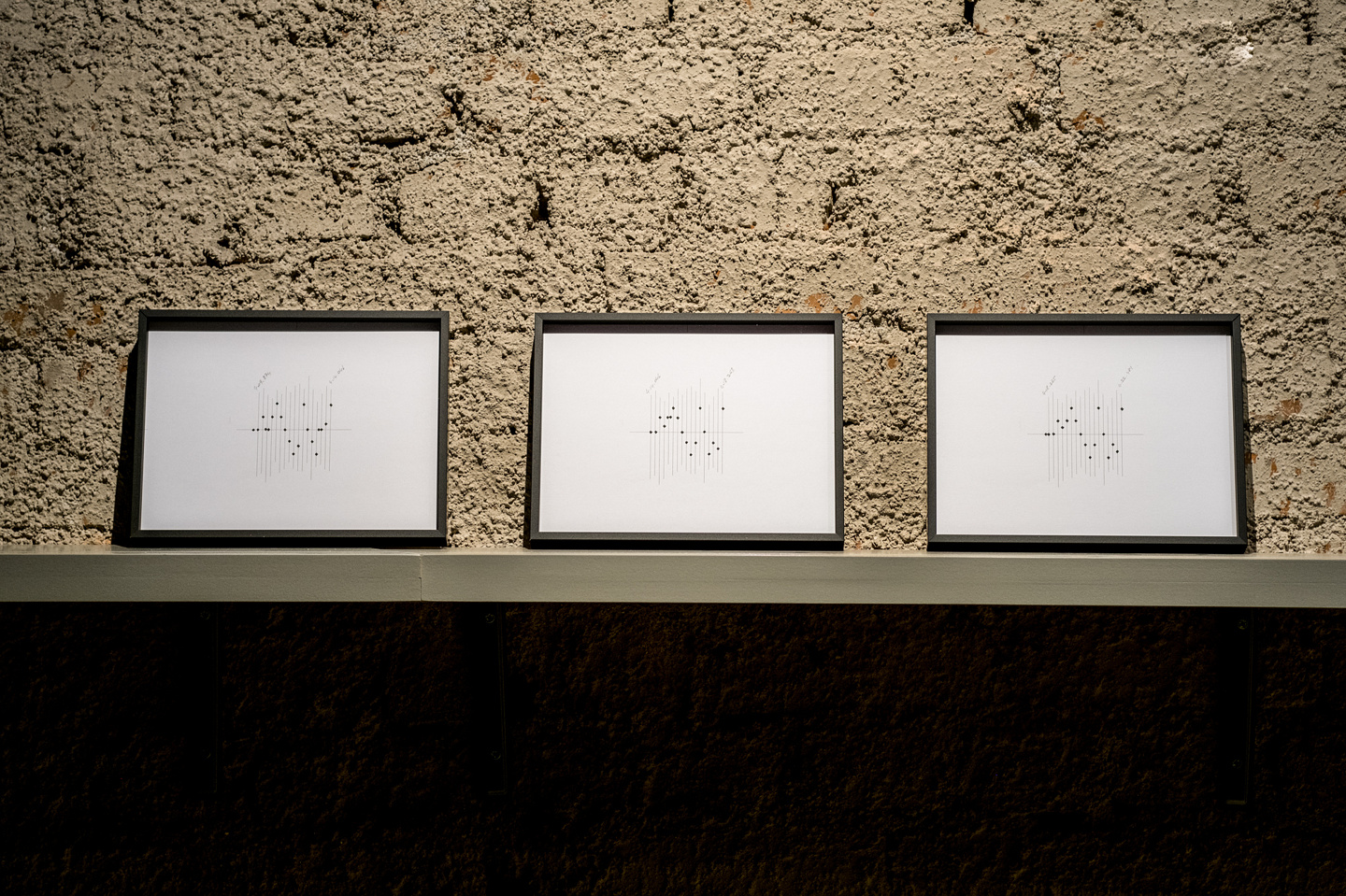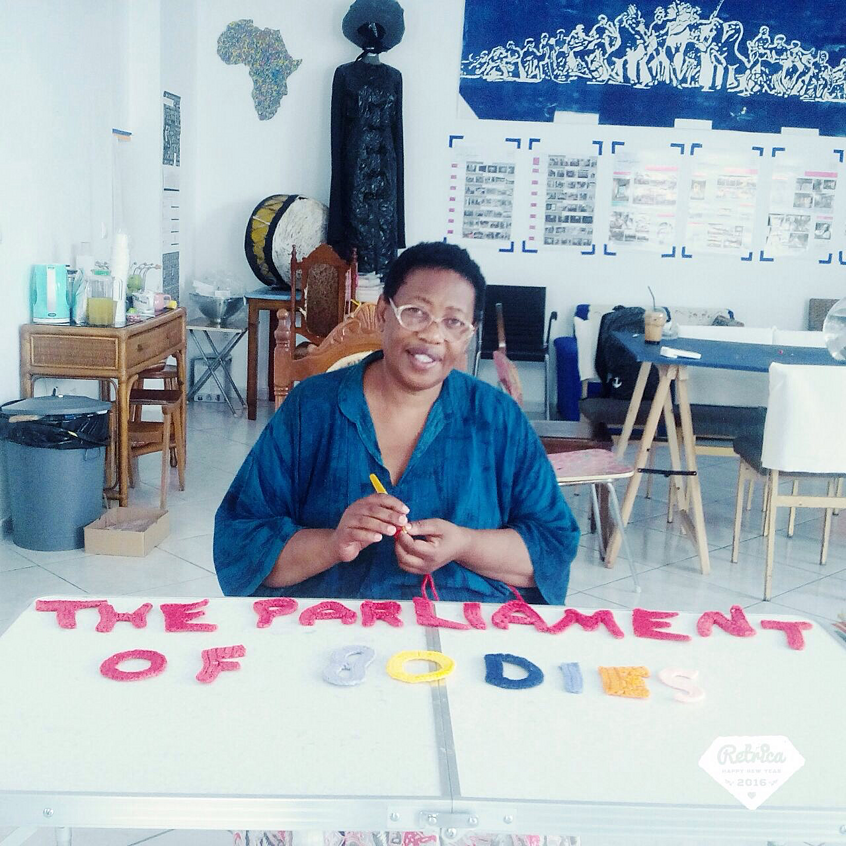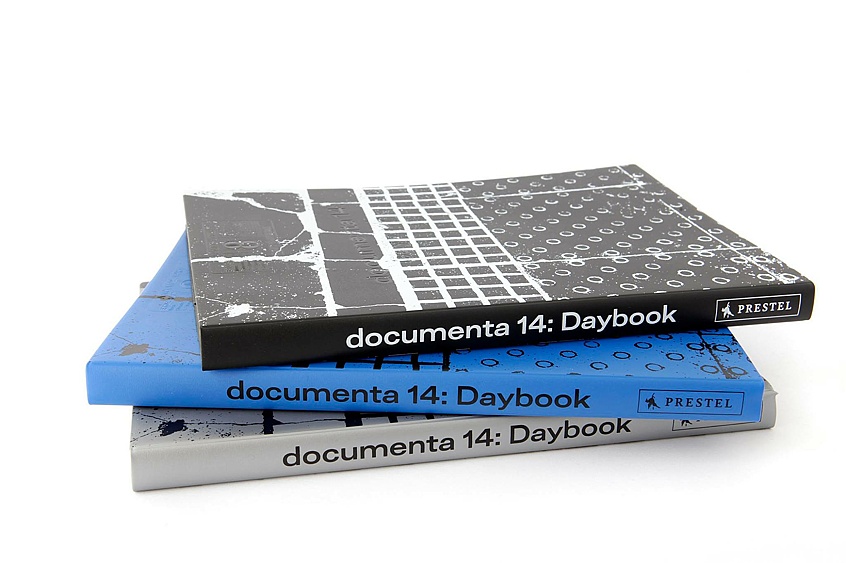
Lala Rukh, Rupak (2016), drawings from a series of eighty-eight, installation view, Athens Conservatoire (Odeion), Athens, documenta 14, 2017, photo: Mathias Völzke
During a visit to Lahore in September 2015, we converged in Lala’s home; the door to her backyard garden lay open and a light breeze drifted in. I soon learned that this garden had been transformed into a screen-printing workshop where members of the Women’s Action Forum, Lahore and other feminist organizations had strategized around the visual renditions of protest, collectively training in print techniques to voice their call-and-response in graphic form, defying the brutal censorship and anti-women laws instituted under the military regime of Zia ul-Haq. These poster-making workshops and alliance-building activities took Lala across South Asia, including to my hometown of Ahmedabad, where she collaborated with women workers from the Self Employed Women’s Association (SEWA), a trade union and NGO. In this way, a resilient network of South Asian activists became central to her personal politics.
Lala’s life was woven together in hard-won attunements played out as an artist, educator, and activist, spent equally between seclusion and community work. This interplay was an essential part of everything she undertook. I recall that Lala had a knack for pointing out—immediately and with displeasure—when a voice or phrase of performed music was Besura (discordant, or “out of tune”). Indeed one of her artistic journeys, toward minimalist calligraphic language, remained intrinsically connected to Hindustani music and dance. When reaching out to score a horizon line over decades, there is an expert incorporation of musicality in her practice. In her Hieroglyphics works—drawings which became extended circuits of rhythm and life observations—the counting of a beat is cast into infinitesimal line and curve forms that improbably manage to account for the movement of music, the chasing of light, and the interminable shifts of environmental terrain. Evidenced as coded writings open to conceptual interpretation, they still remain unknowable. As Lala would say of Hieroglyphics I: Koi ashiq kisi mehbooba se (1995), it was drafted in that vulnerable realm as a “private love letter.”
Lala Rukh, Subh-e-Umeed, 2008, sound, 9:47 min., courtesy the collection of Hetal Pawani and Grey Noise, Dubai
During a site visit to Kassel she confided, as if sharing a secret, that she had a long-standing wish to compose an elaborate sequence of notational drawing studies as an animated progression that would capture the pulsation of a complex rhythm scheme (taal). For this exercise, she eventually chose to base her work on Rupak taal, played as a seven beat cycle on tabla, which became transcribed as an eighty-eight part drawing score, dividing the page into graphic meter to inscribe the tempo measured to seconds. This close listening and assigning of visual strokes through mathematical precision unfolded in unison between the percussion instrument and her Qalam (calligraphy pen). The resulting work Rupak (2016) is a vibrating confluence of full bodied, grey and empty beats that commits to screen a fine-grained infinity.
Alongside her work for documenta 14, Lala was keeping busy with assembling a publication that records the historic lineage of Women’s Action Forum and positions it within feminist currents of recent decades. Her posters, calendar print, and screen-printing manual currently on view in documenta Halle in Kassel are not to be read as nostalgic documents of a movement that once was, but rather remind that such struggles continue to simmer, challenge, and awaken, so we must doggedly keep going.
In this life-practice, what is laid bare is a sense that ultimately time appears as a throbbing pulse—enduring and asymmetrical—rather than a smooth continuum. Lala’s artistic acts were modes of defiant time-keeping, and we see how the shaping of temporality takes varied forms: the gradient of moonlight, a rising wave, tracing of coastal sands, collective reverberation in protest rallies, the lucid contours of a body. The quiet determination unleashed in Lala’s work is never the utopian sort; instead one becomes aware that she is drawing out an elaborate tableau on that fundamental question of freedom and captivity.
When discussing her latest work from the series Mirror Image, where graphite markings upon carbon paper perform as a landscape of multitonal darkness, she matter-of-factly stated, “At this stage in my life, I have the courage to disappear.”
—Natasha Ginwala

Lala Rukh, Rupak (2016), digital animation, sound, installation view, Athens Conservatoire (Odeion), Athens, documenta 14, 2017, photo: Mathias Völzke
The author and the team of documenta 14 would like to express our gratitude to Qasim Ahmed, Saira Ansari, Umer Butt, Sunny Justin, Attiya tur Rehman Nasira, Hetal Pawani, Agha Rahman, and Saleh Samee.


